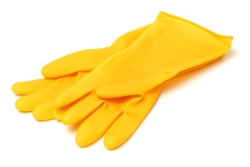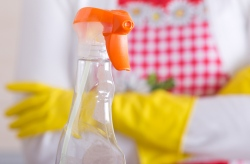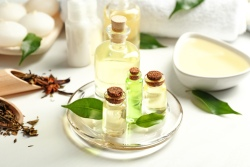Are you struggling with unsightly black mould in your home?
 Get gloves to cover your hands and a mask or ventilator to stop you breathing the mould in. You can also wear a shower cap to protect your hair.
Get gloves to cover your hands and a mask or ventilator to stop you breathing the mould in. You can also wear a shower cap to protect your hair.According to Simon Trussler from Waterproofing Cape Town, black mould is an unwelcome fungus spore that thrives on damp. He says this makes kitchens and bathrooms a favourite breeding ground for this unwanted visitor, especially if there's a lack of good ventilation.
Black mould doesn't just look unpleasant, it can cause several health issues, including respiratory distress, headaches and fatigue, he says.
For the sake of your home and your health, it's best to remove black mould quickly. Effective mould removal is a must for any homeowner.
Simon says you might be concerned about the cost of black mould treatment or even about the toxic chemicals used to get rid of it. But don't worry - you can get rid of black mould easily and cheaply using a handful of common household items, he says.
Ready to rid your home of mould? Simon shares some tips…
1. Get your equipment together
Start by gathering all the tools and materials you’ll need.
Make sure that you have protective aprons or overalls, gloves, masks or a respirator, goggles, plastic sheeting, duct tape and sponges.
 Scraping off dry mould releases it into the air and makes it easy for it to spread. It's better to spray it with water first and treat it while damp.
Scraping off dry mould releases it into the air and makes it easy for it to spread. It's better to spray it with water first and treat it while damp.Simon says you’ll also need a stiff bristled brush, spray bottle, mild household soap, mould treatment agent, and an exhaust fan and dehumidifier which are both optional.
2. Clear and seal your working area
Next, Simon says you'll want to clear everything out of the area you're working in. After all, he says you don't want the mould or the mould treatment getting on your furniture or other items.
If you can, run a dehumidifier for a few hours before you start, to get any excess water out. You can also point an exhaust fan at the window to help expel the mould.
Now, seal off your working area. He says cover vents or doors with plastic sheeting held on by duct tape to prevent mould spreading to other rooms.
3. Protect yourself
“Black mould is toxic, so it's important that you protect yourself when treating it. Wear old clothes and cover them with protective aprons or overalls. Shield your eyes with goggles.”
Simon says get gloves to cover your hands and a mask or ventilator to stop you breathing the mould in. You can also wear a shower cap to protect your hair, he says.
 Tea tree oil is one of the best home mould remedies there is, and it's cheap, too. A 10ml bottle will cost around R70 to R80, but will last for ages.
Tea tree oil is one of the best home mould remedies there is, and it's cheap, too. A 10ml bottle will cost around R70 to R80, but will last for ages.4. Spray the mould with water
According to Simon, if any of the mould is dried on, spray it with water before you start. He says scraping off dry mould releases it into the air and makes it easy for it to spread. It's better to spray it with water first and treat it while damp.
5. Clean with soap and water
Start by cleaning mouldy areas with warm soapy water. Use a stiff bristled brush to work the soapy water into the mould, scrubbing gently as you go. Throw out sponges or any other porous materials that you use while cleaning mould.
6. Apply a mould treatment agent
Simon says you can buy mould treatment agents at any hardware store, but many of them contain harsh chemicals. Alternatively, he says tackle the mould using one of these cheap and easily available household solutions:
Tea tree oil is one of the best home mould remedies there is, and it's cheap, too. A 10ml bottle will cost around R70 to R80, but will last for ages. Make sure you buy a good quality natural tea tree oil as synthetic scented oils don't work for mould removal.
Simon says mix one teaspoon of tea tree oil with one cup of water in a spray bottle and spray the affected area. You don't need to rinse after.
 Pour vinegar into a spray bottle and spray it directly onto the mould.
Pour vinegar into a spray bottle and spray it directly onto the mould.Borax is particularly effective on tiles and hard shower screens, though it can be used for walls and ceilings too. Dissolve 1 cup of borax in 1 gallon of hot water, then pour the solution into a spray bottle and apply it to the affected area, says Simon. Leave it for ten minutes before wiping the mould off. You don't need to rinse after.
According to Simon, vinegar is completely safe and effective. He says it's also cheap – you can get a couple of litres for around R20. Pour this into a spray bottle and spray it directly onto the mould. If the smell bothers you, Simon says add a few drops of essential oil to mask it, and rinse the area after treatment to get rid of the vinegar smell.
Bleach works well for small patches of mould on hard surfaces. He says add a cup of bleach to a gallon of warm water and wipe the affected area thoroughly. Simon says you don't need to rinse after using bleach, but it's important to make sure the area is dry after treatment.
Don't let black mould threaten your home and family’s health. Try out one of these cheap and effective solutions to kill black mould.






